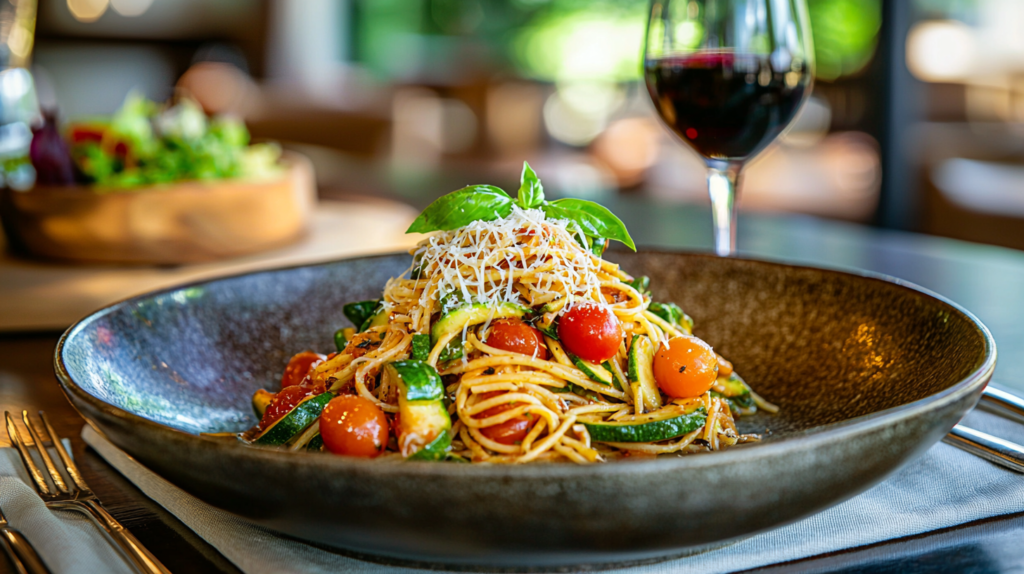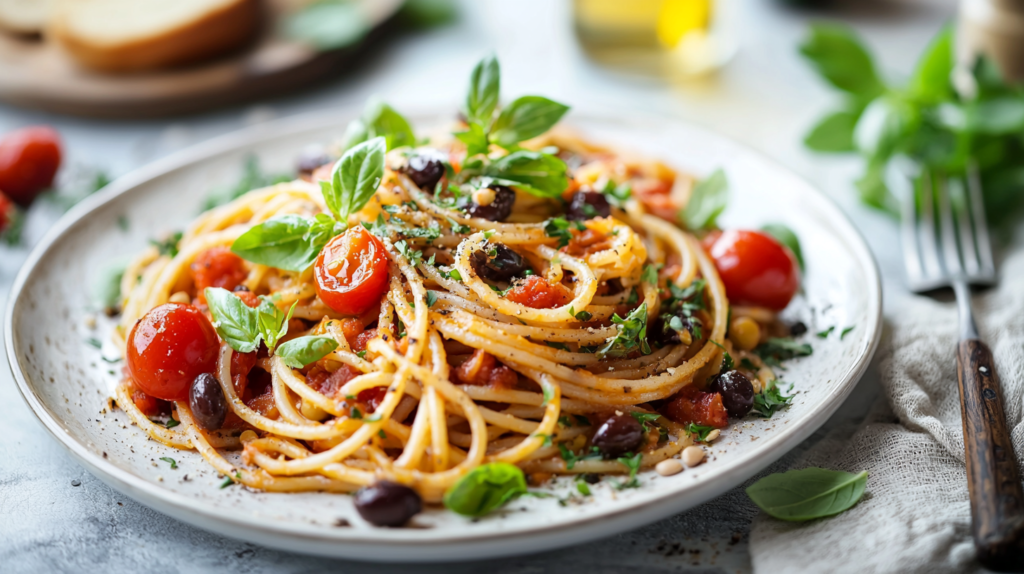
Many people with diabetes believe they need to give up pasta entirely, but that’s not necessarily true. By making smart choices, controlling portions, and balancing your meals, pasta can still be part of a healthy and enjoyable diet.

Traditional pasta is high in simple carbohydrates, which are quickly broken down into glucose. This causes rapid blood sugar spikes, especially when paired with sugary sauces. Its lack of fiber speeds up glucose absorption, and it’s easy to overeat, leading to excess carb intake. Additionally, pasta’s calorie density can contribute to weight gain, increasing the risk of insulin resistance.
According to the American Diabetes Association, carbohydrates should make up 45–60 grams per meal for most people with diabetes. Based on this guideline:
A safe serving size of pasta is 1/3 to 1/2 cup of cooked pasta per meal, depending on your daily carbohydrate goals.
This amount provides approximately 15–22 grams of carbohydrates, fitting within a typical diabetic meal plan.
Diabetes is a chronic condition characterized by elevated blood sugar levels due to insulin resistance or insufficient insulin production. Carbohydrates, such as those found in pasta, play a major role in blood sugar management.
When consumed, carbohydrates are broken down into glucose. For diabetics, large amounts of carbs can lead to rapid spikes in blood sugar levels.
The glycemic index measures how quickly a food raises blood sugar. Foods with a low GI are digested more slowly, leading to steadier blood sugar levels. Choosing low-GI pasta alternatives can help diabetics maintain better glucose control.
Not all pasta is created equal. Here are some diabetes-friendly options:

Whole-grain pasta retains the bran and germ, providing more fiber than refined pasta. This slows digestion, helping to reduce blood sugar spikes. To make it even healthier:
Pair with low-sugar sauces, such as tomato-based or vegetable-rich options.
Add lean proteins like grilled chicken or tofu for a balanced meal.

Made from lentils, chickpeas, or black beans, legume-based pasta is high in both protein and fiber, which keeps you full longer and stabilizes blood sugar. Keep in mind:
The taste and texture can differ from traditional pasta, so try pairing it with flavorful sauces or roasted vegetables.

Shirataki noodles are an ideal choice for diabetics. They are nearly carb- and calorie-free, sugar-free, and rich in glucomannan fiber, a type of soluble fiber with impressive health benefits. The fiber in Konjac Noodles promotes a feeling of fullness (satiety), helping with portion control and weight management.

4. Spaghetti Squash
Spaghetti squash is a vegetable-based alternative that mimics pasta while being naturally low-carb and fiber-rich. It’s also packed with vitamins and hydrating. To prepare:
Roast or steam the squash until tender, but avoid overcooking to maintain a satisfying texture.
How you prepare and serve pasta can greatly affect its glycemic impact:
Cook Al Dente: Pasta cooked al dente has a lower glycemic index than soft, overcooked pasta.
Avoid Heavy Sauces: Opt for light, tomato-based sauces instead of creamy or sugary ones.
Balance with Protein and Vegetables: Adding lean proteins and non-starchy vegetables slows glucose absorption and makes your meal more nutritious.
Pasta doesn’t have to be off-limits for diabetics. By choosing low-GI options like whole-grain, legume-based, or shirataki noodles, and focusing on portion control and meal balance, you can enjoy pasta without worrying about drastic blood sugar spikes. Remember, moderation and smart choices make all the difference in maintaining a healthy lifestyle.


We maintain a rigorous production process for our products, ensuring quality from the transportation of raw materials to the final processing stages. Our konjac noodles go through multiple quality checks to ensure that every package you receive is of the highest quality
908 Vanke Honor Mansion Buji T longgang Dsitrict Shen Zhen China.
(86) 755 - 8441 - 6883
(86) 186 - 7672 - 9553
info@lovekonjac.com